Sunday,
Dec 7
Amsterdam
13°
Monday,
Dec 8
Amsterdam
11°
Tuesday,
Dec 9
Amsterdam
12°
Wednesday,
Dec 10
Amsterdam
10°
Thursday,
Dec 11
Amsterdam
9°
Friday,
Dec 12
Amsterdam
9°
MORE IMPORTANT INFORMATION ABOUT YOUR TRAVEL TO Amsterdam
The Train station is located at the center of Amsterdam
Amsterdam is the capital and most populous city of the Netherlands with a population of 872,680 within the city proper, 1,380,872 in the urban area and 2,410,960 in the metropolitan area. Found within the province of North Holland, Amsterdam is colloquially referred to as the "Venice of the North", attributed by the large number of canals which form a UNESCO World Heritage Site. Amsterdam's name derives from Amstelredamme, indicative of the city's origin around a dam in the river Amstel. Originating as a small fishing village in the late 12th century, Amsterdam became one of the most important ports in the world in the Dutch Golden Age of the 17th century and became the leading centre for finance and trade. In the 19th and 20th centuries, the city expanded, and many new neighbourhoods and suburbs were planned and built. The 17th-century canals of Amsterdam and the 19–20th century Defence Line of Amsterdam are on the UNESCO World Heritage List.
Source:
WikipediaADDITIONAL INFORMATION ABOUT Bruges
The Train station is located at the center of Bruges
Bruges ( BROOZH, French: [bʁyʒ]; Flemish: Brugge [ˈbrʏɣə]; German: Brügge [ˈbʁʏɡə]) is the capital and largest city of the province of West Flanders in the Flemish Region of Belgium, in the northwest of the country, and the seventh largest city of the country by population. The area of the whole city amounts to more than 13,840 hectares (138.4 km2; 53.44 sq miles), including 1,075 hectares off the coast, at Zeebrugge (from Brugge aan zee, meaning "Bruges by the Sea"). The historic city centre is a prominent World Heritage Site of UNESCO. It is oval in shape and about 430 hectares in size. The city's total population is 117,073 (1 January 2008), of whom around 20,000 live in the city centre. The metropolitan area, including the outer commuter zone, covers an area of 616 km2 (238 sq mi) and has a total of 255,844 inhabitants as of 1 January 2008.Along with a few other canal-based northern cities, such as Amsterdam and St Petersburg, it is sometimes referred to as the Venice of the North.
Source:
WikipediaImages of the trains for your trip
Where Can You Travel With Us?
TAKE A LOOK AT OUR MAP
France
Italy
Netherlands
Luxembourg
Austria
Germany
Belgium
Switzerland
Denmark
Sweden
Norway
Hungary
Czech
Ukraine
China
Active
France, Italy, Netherlands, Luxembourg, Austria, Germany, Belgium, Switzerland, Denmark, Sweden, Norway, Hungary, Czech, Ukraine, China
Upcoming
USA, Canada, Spain, Poland, Japan

Other Train Trips From Bruges

Bruges to Oostende

Bruges to Eine

Bruges to Trooz

Bruges to Vorst East

Bruges to Charleroi West

Bruges to Flemalle Grande

Bruges to Vijfhuizen

Bruges to Godarville

Bruges to Brussels North

Bruges to Flawinne

Bruges to Saint Agatha Berchem

Bruges to Glons

Bruges to Spa

Bruges to Quaregnon

Bruges to Kontich Lint

Bruges to Bierges

Bruges to Ede BE

Bruges to Mol

Bruges to Nieuwkerken Waas

Bruges to Mechelen

Bruges to Assesse

Bruges to Hasselt

Bruges to Ninove

Bruges to Yvoir

Bruges to Hergenrath

Bruges to Beervelde

Bruges to Marchienne Au Pont

Bruges to Viville

Bruges to Terhagen

Bruges to Ghent Saint Pieters
WHY YOU SHOULD TRAVEL BY TRAIN?
To travel from Bruges To Amsterdam, trains would be the best travel choice, for several reasons:
1
Eco-Friendly
Trains are the most environmentally-friendly way of transport to the EU Environment Agency. They are powered by electricity, which is renewable and has a low environmental impact.
2
Speed
Travelling by train is in most cases the fastest way to go from Rome to Milan. Trains usually travel at high speeds, making them the fastest way to get from one place to another.
3
Safety
Travelling by train is one of the safest forms of transport. Trains are heavily regulated and monitored, making them safer than other forms of transport.
4
Price
Travelling by train is often cheaper than other forms of transport, such as flying or taking a bus. Trains are often subsidized by the government, making them cheaper than other forms of transport.
5
Luggage
Travelling by train is a great way to transport luggage. Trains usually have plenty of space for luggage and they are usually safe and secure.
6
Luggage
Travelling by train is often faster than other forms of transport, such as driving or taking a bus. Trains usually travel at high speeds, making them the fastest way to get from one place to another.
7
Comfortability
Travelling by train is usually very comfortable. Trains usually have comfortable seating and plenty of legroom, making them a great way to travel.
8
Comfortability
Travelling by train is a great way to get some sleep. Trains usually have comfortable seats and plenty of legroom, making them a great way to get some rest while travelling.
9
WIFI
This is not necessarily the most important when you travel since we prefer to tell you to enjoy your travel without your phones, but on trains, you can find WIFI onboard, so you remain connected to the internet if you choose to.
THESE ARE THE TRAIN OPERATORS WE WORK WITH



















